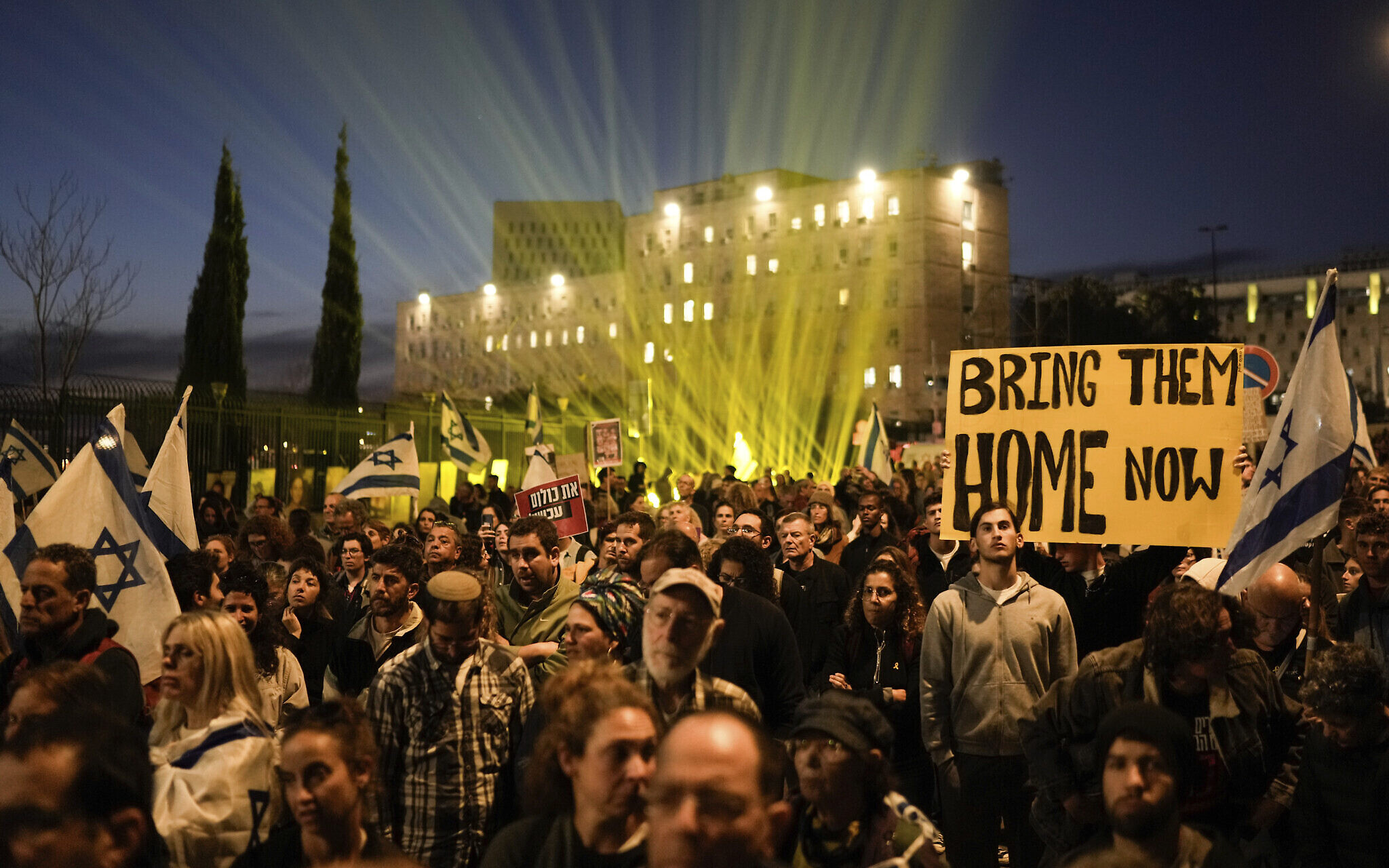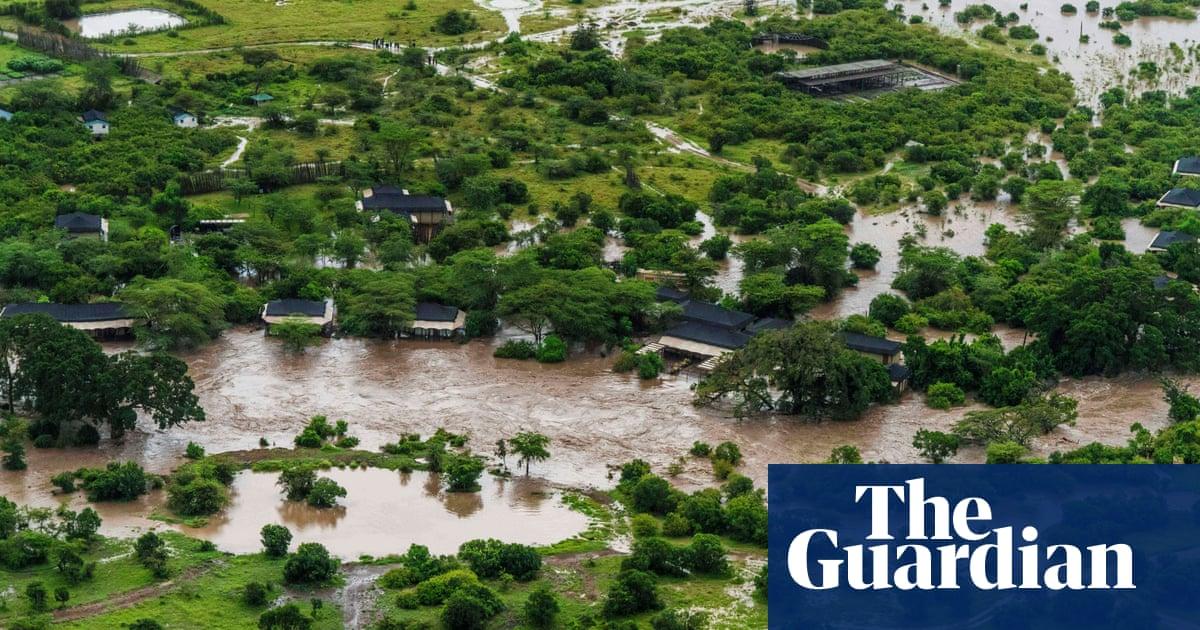According to the sources, Hamas is willing to eventually release all captives, including soldiers and remains, over three 42-day stages.
During this stage, Hamas would release all civilian women, children, elderly and sick hostages, in exchange for Palestinian women, minors, elderly and infirm prisoners, at a rate of 30 inmates for every hostage.
Hamas would then release female soldiers at a price per soldier of 50 Palestinians — 30 serving life sentences and 20 others chosen by Hamas.
The second stage would see the release of male soldiers and male civilian hostages in exchange for prisoners.
The stage would only commence once Israel commits to a permanent ceasefire and all troops withdraw from Gaza.
It is believed that 129 hostages abducted by Hamas on October 7 remain in Gaza — not all of them alive.
Meanwhile, Israel has reportedly insisted to Hamas that it release 40 living hostages as part of the first stage of the proposed truce agreement.
Some 260 IDF soldiers have been killed in the Gaza fighting.
Wednesday’s report by the Lebanese newspaper Al-Akhbar stated that Hamas was open to the idea of a hostage-release agreement in which Israel eventually agreed to an end to the fighting and IDF troops would progressively withdraw from the Gaza Strip.
The Hezbollah-affiliated outlet claimed that a “proportionate” release of Palestinian prisoners in exchange for the hostages would be part of the possible agreement, as well as full access to the northern Strip for all displaced Gazans.
According to the reported position, Israel might be able to take some hostages without having to agree to a full troop withdrawal or a permanent end to the war, which was something Hamas had previously insisted upon.
The terror group told Qatar and Egypt that it is not interested in any further discussion unless its conditions are met, the newspaper said, citing “sources involved in the ongoing negotiations.” It claimed that this was the same stance that the group had taken in the previous round of talks.
Al-Akhbar was informed by a source that “Arab and international parties will not succeed in amending the position.”.
The sources claim that Hamas is prepared to release all prisoners at some point during three 42-day phases, including soldiers and remnants.
In order to allow unrestricted movement from south to north, Israeli troops, who are currently only stationed in a corridor through central Gaza, would first have to move away from Al-Rashid Road on the coast and toward the eastern side of the Strip.
Israel would no longer be conducting airstrikes or reconnaissance missions over the enclave if there was no longer any aerial activity.
At this phase, Hamas would exchange Palestinian women, minors, elderly, and sick prisoners for all civilian women, children, elderly, and sick hostages—30 prisoners for each hostage.
Then, at a cost of 50 Palestinians per soldier—30 serving life sentences and the other 20 chosen by Hamas—Hamas would release the female soldiers.
All 48 prisoners who were set free in the Gilad Shalit agreement and were re-arrested would also need to be released by Israel.
In exchange for prisoners, male soldiers and male civilian hostages would be released during the second phase. Once Israel agrees to a long-term ceasefire and removes all of its troops from Gaza, the stage will only begin.
The third phase would see the body swap, a complete reconstruction of Gaza, and the lifting of Israel’s blockade of the Strip.
Additionally, as part of the agreement, Israel would permit 600 aid trucks to enter Gaza every day from the outset, 50 of which would be loaded with fuel, with 300 of the trucks designated for the northern part of Gaza. From the beginning, heavy equipment for removing debris would also need to be permitted entry.
Not every one of the 129 hostages taken by Hamas on October 7 is thought to be alive and still held captive in Gaza. There is still no word on the whereabouts of the additional person who has been declared missing since October 7. Together with the bodies of fallen IDF soldiers Oron Shaul and Hadar Goldin since 2014, Hamas is also detaining two Israeli civilians, Avera Mengistu and Hisham al-Sayed, who are both believed to be alive after entering the Strip on their own volition in 2014 and 2015, respectively.
According to reports, Israel has demanded that Hamas release 40 of its active hostages as the first step toward a proposed cease-fire.
In reports published on Tuesday in the Hebrew-language media, Hamas claimed that it was not holding 40 female soldiers, civilians, or elderly hostages.
According to the Kan public broadcaster, the main challenge in the current negotiations is that Hamas wants to release fewer than 40 hostages because it is refusing to initially release any male soldiers or other men it captured on October 7.
Additionally, the broadcaster cited an Israeli official who maintained that 40 of Hamas’s captives actually met the requirements for release.
Yahha Sinwar, the leader of Hamas in Gaza, was accused by a senior diplomatic source, quoted in a similar report by Channel 12 news, “of constantly dragging his feet and opposing an agreement.”. “.
According to a report released on Wednesday, unidentified Israeli officials are already attributing the troop withdrawal from Khan Younis and the increase in humanitarian aid reaching the Strip to the hostage-truce negotiations’ anticipated failure. They further assert that Hamas will not yield after receiving so much aid at no cost.
Some Jerusalem officials believe that both actions “really hurt negotiations,” according to the news website Ynet. “.
According to Israeli sources cited by Ynet, “We gave up our strong cards for nothing,” and as a result, Hamas’s position is even more difficult to overcome. “Hamas is resolute in its attempts to manipulate the mediators and is escalating its demands for an end to the war and the withdrawal of troops. “.
The military claims that it left Khan Younis because its operations there were completed and that its soldiers needed time to rest before advancing into Rafah.
Amid mounting fears of famine and mounting international pressure, the number of aid trucks entering Gaza on Tuesday reached its highest level since the beginning of the conflict.
There are still troops in the enclave, but they are only in the central Gaza corridor, where the Nahal Brigade soldiers are fighting Hamas gunmen, the Israeli Defense Forces said on Wednesday.
According to the military, footage of operations inside the so-called Netzarim corridor was made public, and various gunmen were killed over the course of the previous day, including a cell engaged in close quarters fighting.
Although they have left the north and south of the Strip, troops are still present in the corridor, which is a stretch of land that stretches from the coast to the Israeli border close to Be’eri.
Construction of the corridor, which is centered around a road north of Nuseirat and south of Gaza City, allows Israel to control access to the north for Palestinians attempting to return after fleeing south, while allowing the IDF to conduct raids in northern and central Gaza.
Additionally, the corridor enables Israel to run a crossing for trucks carrying humanitarian supplies into northern Gaza that is almost directly accessible. The army guards the artery during operation.
According to the army, it has been carrying out airstrikes all over the Strip, hitting numerous targets with drones and fighter jets in the last 24 hours.
Raket launchers, tunnel shafts, military installations, and other infrastructure were among the targets, according to the IDF. A Hamas cell that was a threat to ground forces was the target of one airstrike, according to the IDF.
A building and a rocket launcher in Jabaliya, northern Gaza, which was used to fire a rocket at Kfar Aza, southern Israel, the day before, were among the locations destroyed. The Iron Dome defense system intercepted the rocket.
Following the October 7 attack on southern Israel by Hamas rulers, in which thousands of terrorists killed about 1,200 people and kidnapped 253 others, Israel began its offensive on the Strip.
Over a million people have been forced to flee to Gaza’s southern city of Rafah, where Israel has vowed to launch a campaign despite opposition from allies, as a result of Israel’s military response that has destroyed nearly half of the Strip’s residential buildings.
Over 33,000 people have died in the fighting in the Gaza Strip, according to the Hamas-run Gaza Health Ministry. This number cannot be independently verified and includes the approximately 13,000 Hamas gunmen that Israel claims to have killed in combat. Additionally, Israel claims that on October 7, it killed about 1,000 terrorists inside of Israel. There have been about 260 IDF soldiers lost to gunfire in Gaza.




